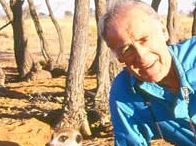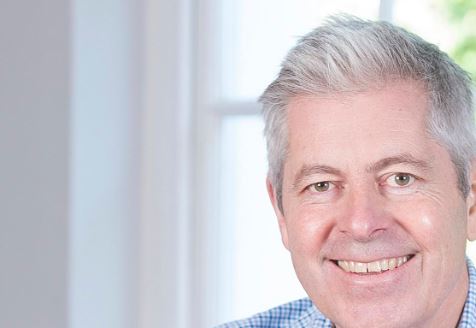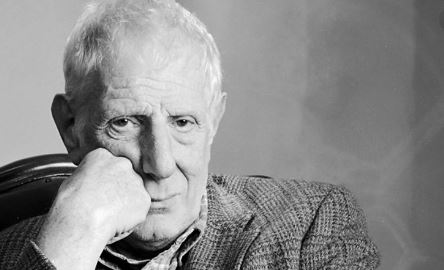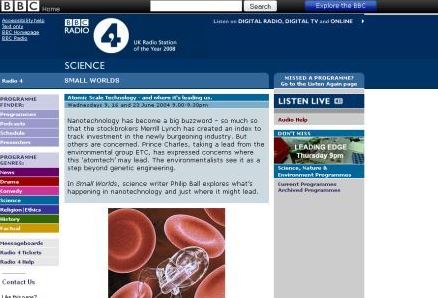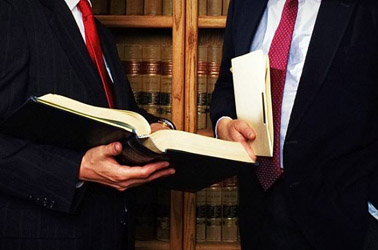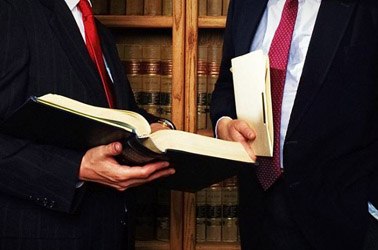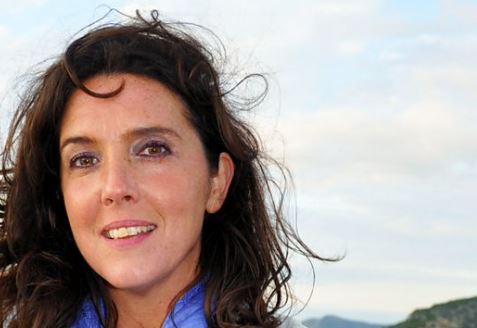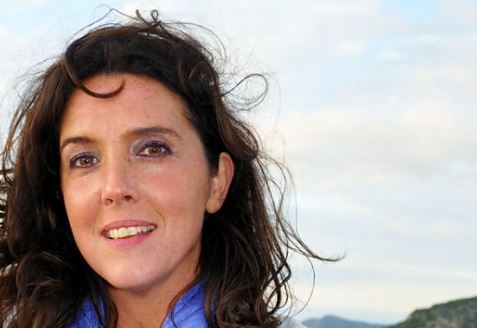Select one or more of these popular tags:
With the help of fellow author and mathematician Ian Stewart, Pratchett explains his love of science, his fascination with Einstein and the science behind the fantasy world he's created and sold to more than 20 countries worldwide. "Any sufficiently advanced technology is indistinguishable from magic" said Arthur C Clarke decades ago and it holds true today. Just try and explain how your mobile phone or dvd player works. With the help of fellow author and mathematician Ian Stewart, Pratchett explains his love of science, his fascination with Einstein and the science behind the fantasy world he's created and sold to more than 20 countries worldwide.
With the help of fellow author and mathematician Ian Stewart, Pratchett explains his love of science, his fascination with Einstein and the science behind the fantasy world he's created and sold to more than 20 countries worldwide. "Any sufficiently advanced technology is indistinguishable from magic" said Arthur C Clarke decades ago and it holds true today. Just try and explain how your mobile phone or dvd player works. With the help of fellow author and mathematician Ian Stewart, Pratchett explains his love of science, his fascination with Einstein and the science behind the fantasy world he's created and sold to more than 20 countries worldwide.
Comedian Mark Steel has delved into the great man's life and found a great deal to laugh about, if only in theory. "Two things are infinite: the universe and human stupidity; and I'm not sure about the universe." (AE). One doesn't normally associate humour with physics but Einstein has proved the exception, at least for two artists. The first is New Yorker Sid Harris who's been churning out science cartoons for reputable journals since the late sixties.Comedian Mark Steel has delved into the great man's life and found a great deal to laugh about, if only in theory.
Comedian Mark Steel has delved into the great man's life and found a great deal to laugh about, if only in theory. "Two things are infinite: the universe and human stupidity; and I'm not sure about the universe." (AE). One doesn't normally associate humour with physics but Einstein has proved the exception, at least for two artists. The first is New Yorker Sid Harris who's been churning out science cartoons for reputable journals since the late sixties.Comedian Mark Steel has delved into the great man's life and found a great deal to laugh about, if only in theory.
Two physicists turned novelists - Gregory Benford and Andrew Crumey share their thoughts on the nature of time and Einstein's theories of Special and General relativity through their [respective] books Timescape and Mobius Dick. Whilst both writers can be placed in the genre of science fiction, their stories are firmly rooted in the latest research and theoretical musings of Einstein's latter-day followers.
Two physicists turned novelists - Gregory Benford and Andrew Crumey share their thoughts on the nature of time and Einstein's theories of Special and General relativity through their [respective] books Timescape and Mobius Dick. Whilst both writers can be placed in the genre of science fiction, their stories are firmly rooted in the latest research and theoretical musings of Einstein's latter-day followers.
Artist Cornelia Parker explores her ground-breaking (literally) work Cold Dark Matter: An Exploded View which involved getting the army to blow up a garden shed in order to re-create the first moments after the creation of space and time. Artist Cornelia Parker explores her ground-breaking (literally) work Cold Dark Matter: An Exploded View which involved getting the army to blow up a garden shed in order to re-create the first moments after the creation of space and time. As Cornelia Parker discusses her inspiration for this piece and its aims, cosmologists discuss how the Einstein's ideas shaped our notion of how the universe and everything in it got started.
Artist Cornelia Parker explores her ground-breaking (literally) work Cold Dark Matter: An Exploded View which involved getting the army to blow up a garden shed in order to re-create the first moments after the creation of space and time. Artist Cornelia Parker explores her ground-breaking (literally) work Cold Dark Matter: An Exploded View which involved getting the army to blow up a garden shed in order to re-create the first moments after the creation of space and time. As Cornelia Parker discusses her inspiration for this piece and its aims, cosmologists discuss how the Einstein's ideas shaped our notion of how the universe and everything in it got started.
-
Rules of Life 1
-
Aubrey Manning
Programme 1 - Life Before Birth The Rules of Life shape animals' lives even before birth. A mother's nutrition and stress levels affect her offspring's later life.
Programme 1 - Life Before Birth The Rules of Life shape animals' lives even before birth. A mother's nutrition and stress levels affect her offspring's later life.
-
Rules of Life 2
-
Aubrey Manning
Programme 2 - Early Days If at first you don't succeed, you don't succeed. Only 50% of grey seal pups survive in their first year.
Programme 2 - Early Days If at first you don't succeed, you don't succeed. Only 50% of grey seal pups survive in their first year.
-
Rules of Life 3
-
Aubrey Manning
Programme 3 - Going Independent Leaving the safety of home can be a testing time, with many new skills to acquire. Young bull elephants spend years learning from older males before they can breed.
Programme 3 - Going Independent Leaving the safety of home can be a testing time, with many new skills to acquire. Young bull elephants spend years learning from older males before they can breed.
-
Rules of Life 4
-
Aubrey Manning
Programme 4 - Pairing Up Attracting and choosing a mate can be a tricky and dangerous business. Red deer stags have to battle it out for access to females.
Programme 4 - Pairing Up Attracting and choosing a mate can be a tricky and dangerous business. Red deer stags have to battle it out for access to females.
-
Rules of Life 5
-
Aubrey Manning
Programme 5 - Happy Families Parenting is often a challenge. Meerkats work together to feed and look after the next generation.
Programme 5 - Happy Families Parenting is often a challenge. Meerkats work together to feed and look after the next generation.
-
Rules of Life 6
-
Aubrey Manning
Programme 6 - Food Is Not For Free For many animals there's a balance between getting enough food whilst not being eaten yourself. Spiny lobsters screech like a violin to scare off predators.
Programme 6 - Food Is Not For Free For many animals there's a balance between getting enough food whilst not being eaten yourself. Spiny lobsters screech like a violin to scare off predators.
-
Scars of Evolution 1
-
David Attenborough
The hypothesis proposes that the physical characteristics that distinguish us from our nearest cousin apes - standing and moving bipedally, being naked and sweaty, our swimming and diving abilities, fat babies, big brains and language - all of these and others are best explained as adaptations to a prolonged period of our evolutionary history being spent in and around the seashore and lake margins, not on the hot dry savannah or in the forest with the other apes. The programmes explore the varieties of response to the theory, from when it was first proposed to the present day.
The hypothesis proposes that the physical characteristics that distinguish us from our nearest cousin apes - standing and moving bipedally, being naked and sweaty, our swimming and diving abilities, fat babies, big brains and language - all of these and others are best explained as adaptations to a prolonged period of our evolutionary history being spent in and around the seashore and lake margins, not on the hot dry savannah or in the forest with the other apes. The programmes explore the varieties of response to the theory, from when it was first proposed to the present day.
-
Scars of Evolution 2
-
David Attenborough
The second programme looks at the evidence that has accumulated in the last 5 - 10 years which seems to be driving the anthropological herd inexorably down to the water's edge. It includes reports on brain evolution, highlighting the essential fatty acids and nutrients that can only be sourced in the marine food chain; the global coastal migrations of early hominids, including major water crossings 1 million years ago; diving response and voluntary breath-control as semi-aquatic pre-adaptation for speech and some new and intriguing research findings that seem to indicate that water-births may be a very ancient human adaptation indeed.
The second programme looks at the evidence that has accumulated in the last 5 - 10 years which seems to be driving the anthropological herd inexorably down to the water's edge. It includes reports on brain evolution, highlighting the essential fatty acids and nutrients that can only be sourced in the marine food chain; the global coastal migrations of early hominids, including major water crossings 1 million years ago; diving response and voluntary breath-control as semi-aquatic pre-adaptation for speech and some new and intriguing research findings that seem to indicate that water-births may be a very ancient human adaptation indeed.
-
Science Blacklist
-
Justin Webb
BBC Washington correspondent Justin Webb investigates claims that the US government is manipulating scientific research.
BBC Washington correspondent Justin Webb investigates claims that the US government is manipulating scientific research.
-
Self Made Things 1
-
Jonathan Miller
In this five-part series, Jonathan Miller returns to his roots in medicine and tells the story of how we came to understand reproduction & heredity. Disposing with the idea of an external, perhaps even supernatural, vitalising force, he describes how we have arrived at the picture of ourselves and all organisms as Self-Made Things. Darwinism in the second half of the 19th century gave us a theoretical framework that captured in one stroke the seemingly limitless variety that zoologists, botanists and paleontologists were finding in every dimension in nature.
In this five-part series, Jonathan Miller returns to his roots in medicine and tells the story of how we came to understand reproduction & heredity. Disposing with the idea of an external, perhaps even supernatural, vitalising force, he describes how we have arrived at the picture of ourselves and all organisms as Self-Made Things. Darwinism in the second half of the 19th century gave us a theoretical framework that captured in one stroke the seemingly limitless variety that zoologists, botanists and paleontologists were finding in every dimension in nature.
-
Self Made Things 2
-
Jonathan Miller
This week Jonathan Miller looks at the birth of ideas about reproduction and heredity. Starting with the ideas of Aristotle and the early Greeks, he argues that because knowledge of underlying structures such as cells and genes are comparatively recent, it was necessary for thinkers addressing the problem, right through the renaissance, to resort to immaterial agents acting upon the raw substances of fertilization.
This week Jonathan Miller looks at the birth of ideas about reproduction and heredity. Starting with the ideas of Aristotle and the early Greeks, he argues that because knowledge of underlying structures such as cells and genes are comparatively recent, it was necessary for thinkers addressing the problem, right through the renaissance, to resort to immaterial agents acting upon the raw substances of fertilization.
-
Self Made Things 3
-
Jonathan Miller
This week, Jonathan Miller describes eighteenth and nineteenth century efforts to identify the cell as the underlying structure of living things.
This week, Jonathan Miller describes eighteenth and nineteenth century efforts to identify the cell as the underlying structure of living things.
-
Self Made Things 4
-
Jonathan Miller
This week, Jonathan Miller describes the research that eventually led us to identify the gene as the key agent of inheritance.
This week, Jonathan Miller describes the research that eventually led us to identify the gene as the key agent of inheritance.
-
Self Made Things 5
-
Jonathan Miller
In the final programme in the series, Jonathan Miller brings the story of reproduction and generation up to the present. He hears first from Nobel prize-winner Sir Aaron Klug who describes the work done by Crick and Watson in 1953 to identify the chemical structure of deoxyribonucleic acid, better know as DNA, which they represented as a double helix.
In the final programme in the series, Jonathan Miller brings the story of reproduction and generation up to the present. He hears first from Nobel prize-winner Sir Aaron Klug who describes the work done by Crick and Watson in 1953 to identify the chemical structure of deoxyribonucleic acid, better know as DNA, which they represented as a double helix.
Nanotechnology has become a big buzzword – so much so that the stockbrokers Merrill Lynch has created an index to track investment in the newly burgeoning industry. But others are concerned. Prince Charles, taking a lead from the environmental group ETC, has expressed concerns where this ‘atomtech’ may lead. The environmentalists see it as a step beyond genetic engineering.
Nanotechnology has become a big buzzword – so much so that the stockbrokers Merrill Lynch has created an index to track investment in the newly burgeoning industry. But others are concerned. Prince Charles, taking a lead from the environmental group ETC, has expressed concerns where this ‘atomtech’ may lead. The environmentalists see it as a step beyond genetic engineering.
-
Small Worlds - 02 Why Worry?
-
Philip Ball
The environmentalist ETC group has warned that nanotechnology (or ‘atomtech’ as they describe it) poses “horrendous social and environmental risks”. It was that group's report, The Big Down, which prompted the Prince of Wales to ask the Royal Society to look into the impacts of nanotechnology.
The environmentalist ETC group has warned that nanotechnology (or ‘atomtech’ as they describe it) poses “horrendous social and environmental risks”. It was that group's report, The Big Down, which prompted the Prince of Wales to ask the Royal Society to look into the impacts of nanotechnology.
To most of us, viruses are the cause of illnesses like flu and measles. But to Angela Belcher of MIT, they’re the ideal building blocks for creating new materials at close to the atomic scale, in the new science of nanotechnology.
To most of us, viruses are the cause of illnesses like flu and measles. But to Angela Belcher of MIT, they’re the ideal building blocks for creating new materials at close to the atomic scale, in the new science of nanotechnology.
-
The Chambers - 1
-
Radio 4
First of two programmes which go behind the elegant facades of legal London to meet the barristers, clerks and staff of Outer Temple Chambers, one of London's leading law chambers, as they prepare for the biggest upheaval in their history: the full implementation of the 2007 Legal Services Act. Due to be fully implemented in 2012, the Act will produce greater competition in who can provide legal services. Many of the cosy arrangements of the past will be swept away, and barristers will need to show that they can provide the service and value for money that the public wants.
First of two programmes which go behind the elegant facades of legal London to meet the barristers, clerks and staff of Outer Temple Chambers, one of London's leading law chambers, as they prepare for the biggest upheaval in their history: the full implementation of the 2007 Legal Services Act. Due to be fully implemented in 2012, the Act will produce greater competition in who can provide legal services. Many of the cosy arrangements of the past will be swept away, and barristers will need to show that they can provide the service and value for money that the public wants.
-
The Chambers - 2
-
Radio 4
Second of two programmes which go behind the elegant facades of legal London to meet the barristers, clerks and staff of Outer Temple Chambers, one of London's leading law chambers.
Second of two programmes which go behind the elegant facades of legal London to meet the barristers, clerks and staff of Outer Temple Chambers, one of London's leading law chambers.
-
The Essay - Naturalists: Animals and Human Nature - 1
-
David Matless
Episode 1 - Ted Ellis. Biographical portraits of five 20th-century animal lovers and the creatures and landscapes they championed
Episode 1 - Ted Ellis. Biographical portraits of five 20th-century animal lovers and the creatures and landscapes they championed
-
The Essay - Naturalists: Animals and Human Nature - 2
-
Hayden Lorimer
Episode 2 - Reindeer Herders in the Cairngorms. Biographical portraits of five 20th-century animal lovers and the creatures and landscapes they championed
Episode 2 - Reindeer Herders in the Cairngorms. Biographical portraits of five 20th-century animal lovers and the creatures and landscapes they championed
-
The Essay - Naturalists: Animals and Human Nature - 3
-
David Matless
Episode 3 - James Wentworth Day - The Prejudiced Naturalist. Biographical portraits of five 20th-century animal lovers and the creatures and landscapes they championed
Episode 3 - James Wentworth Day - The Prejudiced Naturalist. Biographical portraits of five 20th-century animal lovers and the creatures and landscapes they championed
-
The Essay - Naturalists: Animals and Human Nature - 4
-
Hayden Lorimer
Episode 4 - Ludwig Koch and Bird Song. Biographical portraits of five 20th-century animal lovers and the creatures and landscapes they championed
Episode 4 - Ludwig Koch and Bird Song. Biographical portraits of five 20th-century animal lovers and the creatures and landscapes they championed
-
The Essay - Naturalists: Animals and Human Nature - 5
-
David Matless
Episode 5 - Marietta Pallis - Swimming in the Eagle. Biographical portraits of five 20th-century animal lovers and the creatures and landscapes they championed
Episode 5 - Marietta Pallis - Swimming in the Eagle. Biographical portraits of five 20th-century animal lovers and the creatures and landscapes they championed
-
The Ideas That Make Us - Episode 1: Idea
-
Bettany Hughes
Bettany Hughes reveals the history of the most influential ideas in the story of civilisation.
Bettany Hughes reveals the history of the most influential ideas in the story of civilisation.
-
The Ideas that Make Us - Episode 2: Fame
-
Bethany Hughes
Bettany Hughes considers the fame game through the ages.
Bettany Hughes considers the fame game through the ages.









